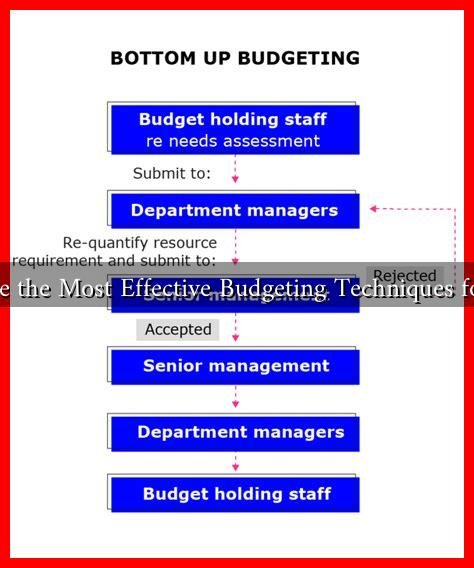-
Table of Contents
What Are the Most Effective Budgeting Techniques for 2025?
As we step into 2025, effective budgeting techniques are more crucial than ever. With rising inflation, fluctuating interest rates, and an unpredictable economy, individuals and businesses alike must adopt robust budgeting strategies to ensure financial stability. This article explores some of the most effective budgeting techniques for 2025, providing insights and practical tips to help you manage your finances effectively.
The Importance of Budgeting in 2025
Budgeting is not just about tracking expenses; it’s a comprehensive approach to managing your financial health. In 2025, the importance of budgeting can be highlighted through several key points:
- Financial Awareness: Budgeting helps individuals and businesses understand their financial situation, enabling informed decision-making.
- Goal Setting: A well-structured budget allows for the setting of short-term and long-term financial goals.
- Debt Management: Effective budgeting can help in managing and reducing debt, which is crucial in an era of rising interest rates.
- Emergency Preparedness: A solid budget can create a safety net for unexpected expenses, ensuring financial resilience.
Top Budgeting Techniques for 2025
Here are some of the most effective budgeting techniques that can help you navigate your financial landscape in 2025:
1. Zero-Based Budgeting
Zero-based budgeting (ZBB) is a method where every dollar of income is allocated to specific expenses, savings, or debt repayment, resulting in a net balance of zero. This technique encourages individuals to justify every expense, promoting financial discipline.
- Example: If you earn $3,000 a month, you would allocate every dollar to categories like rent, groceries, savings, and entertainment until you reach zero.
- Case Study: A family using ZBB reported a 20% increase in savings within six months by eliminating unnecessary expenses.
2. The 50/30/20 Rule
The 50/30/20 rule is a simple budgeting framework that divides your after-tax income into three categories:
- 50% for Needs: Essential expenses such as housing, utilities, and groceries.
- 30% for Wants: Non-essential expenses like dining out, entertainment, and hobbies.
- 20% for Savings and Debt Repayment: This includes contributions to savings accounts and paying off debts.
This technique is particularly effective for those who prefer a straightforward approach to budgeting without getting bogged down in details.
3. Envelope System
The envelope system is a cash-based budgeting technique where you allocate cash for different spending categories into separate envelopes. Once the cash in an envelope is gone, you cannot spend any more in that category for the month.
- Benefits: This method helps curb overspending and encourages mindful spending habits.
- Example: If you allocate $200 for groceries, once that cash is spent, you cannot purchase more groceries until the next month.
4. Digital Budgeting Tools
In 2025, technology plays a significant role in budgeting. Numerous apps and software can help track expenses, set budgets, and analyze spending patterns. Some popular options include:
- Mint: A free budgeting tool that connects to your bank accounts and categorizes transactions.
- You Need A Budget (YNAB): A paid app that focuses on proactive budgeting and financial education.
- GoodBudget: A digital envelope budgeting app that allows you to manage your cash flow virtually.
Conclusion
As we navigate the financial landscape of 2025, adopting effective budgeting techniques is essential for achieving financial stability and success. Whether you choose zero-based budgeting, the 50/30/20 rule, the envelope system, or digital tools, the key is to find a method that aligns with your financial goals and lifestyle. By implementing these strategies, you can take control of your finances, reduce debt, and build a secure financial future.
In summary, budgeting is not merely a task; it is a vital skill that empowers individuals and businesses to thrive in an ever-changing economic environment. Start today by evaluating your current budgeting approach and consider integrating one or more of these techniques to enhance your financial well-being in 2025.

